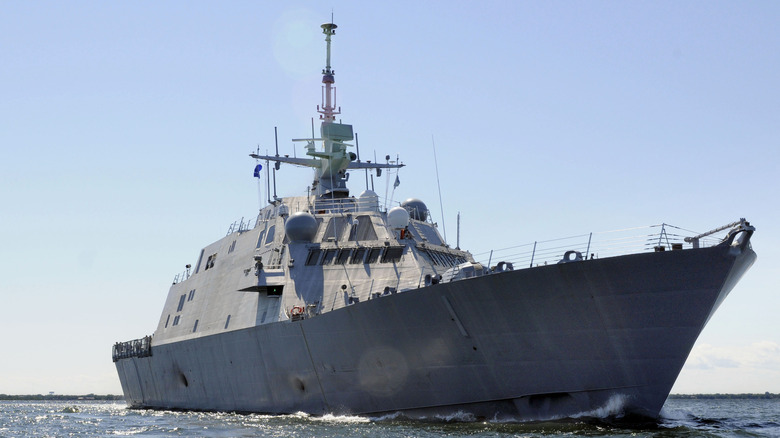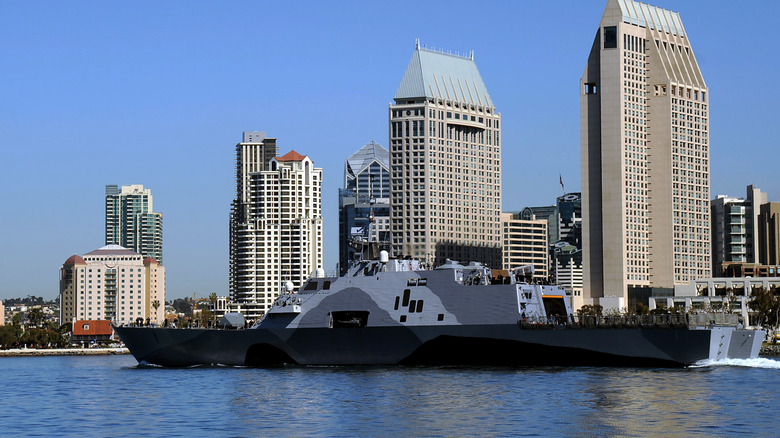The US Navy Is Repairing Freedom-Class Combat Ships At Sea Now (And Here's Why It Matters)
From the largest aircraft carrier to the Boomin Beaver, potentially the smallest ship in the U.S. Navy, the United States has a huge range of vessels under its command. One of the most interesting classes of vessels is the Freedom-class. These are Littoral Combat Ships, and despite their smaller, slighter bodies, they still have considerable power in their own right. In December 2024, the USNI quoted Secretary of the Navy Carlos Del Toro: "Today, the Littoral Combat Ship is equipped with the Naval Strike Missile, a long-range precision strike weapon. Eventually, many will receive the Mk 70 Payload Delivery System with vertical launch system technology ... yes, the LCS is back."
Much of the maintenance and repair work performed on the littoral combat ships is completed by outside contractors rather than the crew themselves, the better to minimize crew numbers. In August 2025, however, the LCS USS St. Louis became an important exception to this rule. When the vessel's Main Propulsion Diesel Engine required maintenance, the crew's talented engineers completed the work themselves. Its chief engineer, Lt. Cmdr. Jasmine Hilton, expressed her pride in the crew, saying (via DVIDS), "They have shown exceptional professional curiosity, truly embodying becoming masters of their equipment."
This represents an increased focus on work that can be performed on an LCS while it's on a mission, an important capacity that can help ensure that they continue their important work as efficiently as possible. Littoral combat ships have a complicated history and have been controversial, but the program still has a lot of potential.
Why an LCS is a different matter to other naval ships
These littoral combat ships were designed to operate in more shallow waters along the coast, hence the name, and were created in the wake of the harrowing events of September 11, 2001, as an additional and rather more flexible means of defense where needed. They were primarily built to be lightweight and maneuverable, and are now some of the fastest ships in the U.S. Navy. The Freedom class is approximately 387 feet long, displaces around 3.450 metric tons, and accommodates a primary crew of approximately 50 people.
They're relatively small (the Gerald R. Ford aircraft carrier is around 1,092 feet long for comparison) and aren't heavily armed either, boasting a Mark 110 and a suite of Rolling Airframe Missiles among their main armaments. The most significant aspect of Freedom class crews being able to repair their vessels themselves is what it represents. Repairing the USS St. Louis at sea (via DVIDS), "underscores a two-year push to increase LCS self-sufficiency by training Sailors to perform more maintenance and repairs at the point of need."
This was made possible because the Navy provided the ship with spare parts and necessary equipment that may not have been available before. Having the skills and equipment to perform routine and preventative maintenance while deployed rather than returning to port means the vessels can remain combat ready. Despite development issues and ballooning costs that caused many of them to be decommissioned, the Navy is endeavoring to make its small fleet of littoral combat ships viable.

